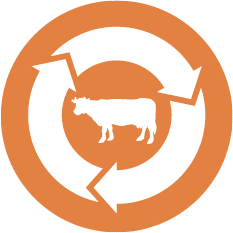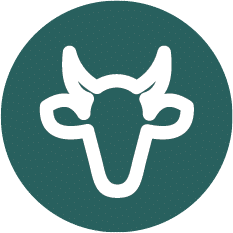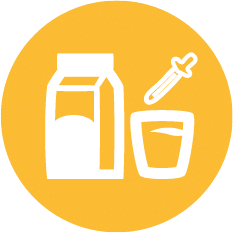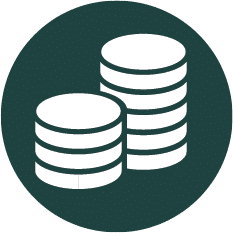Since 2014 farmers, livestock scientists and veterinarians from the four countries have developed and tested the NLF 5-layered approach to improve cattle health and farmer income. The NLF-strategy combines the following elements:

Layer 1:
Improved animal- farm- and soil management
This is the basis of the NLF approach. Good feeding, clean water, control of parasites and infectious diseases, as well as manure management and soil fertility, not only reduce mortality but also improve productivity and wellbeing of livestock
The Netherlands has an important experience and history on farm management to share in these areas, and have developed good monitoring protocols and tools, including the NLF Wheel of Animal Production and Wellbeing. On the topic of dairy farming within ecosystem boundaries, new initiatives and tools are emerging which can be shared with other countries.

Layer 2:
Strategic use of local breeds
Strategic use of local breeds in crossbreeding programs and the conservation of local breeds, is an important component of the program, leading to more resilient cattle adapted to local circumstances. Community based breeding is one of the methodologies for this, and the Ugandan and Ethiopian partners have rich experience in this area. Also within the Netherlands ‘crossbreeding back’ the Holstein-Frisian dairy cows with dual-purpose cattle breeds is an increasingly important strategy for increasing animal health and life expectancy. The improvement of local animal breeds throughout the world, often kept by remote and poor communities, represent a large and still unexplored potential in the strategy for sustainable dairy farming practices.
Layer 3:
Use of medicinal plants
Medicinal plants and other natural products – often referred to as Ethno Veterinary Practices – are an under-exploited resource for prevention and cure of livestock health problems, and of crucial importance for producing residue-free milk.
India has an especially rich experience and history of documenting, validating, promoting and legitimizing traditional Ethno Veterinary Practices (EVP) in the country, and this experience is shared across the international partners.
An additional aspect is to focus on natural feeds. Natural grasslands that include herbal products are increasingly seen as an important way to reduce antibiotic use in dairy farming as well as improve soil fertility and closing nutrient cycles. It is a small but gradually growing field in the Netherlands – and still prevalent in countries like India.

Layer 4:
Milk quality control
In most poor countries of the world the milk quality control is limited to fat and protein content, and adulteration. Effective control of residues in fresh milk is seldom in place – while it is clear that residues in milk and milk products are increasingly common. Moreover, milk quality control is often not adapted to smallholder dairy systems. The Netherlands has expertise in milk quality control systems with focus on determining chemical residues, while this practice is growing under the conditions of smallholder dairy production elsewhere.

Layer 5:
Extra farm income
The fifth and crucial step within the road map is to ensure a better income to livestock keepers. The NLF 5-layer approach is shown to generate extra income for farmers due to increased health and productivity, reduced mortality, and reduced costs for livestock health care – while local production of medicinal plants can provide an extra source of income for women
Better animal health and wellbeing leads to improved productivity of dairy cows, reduced loss of young stock, and reduced production costs, thus to improved farm income. High quality and residue-free milk can fetch a better price, especially when combined with value addition and local marketing. Moreover, medicinal plant production can form a key component for providing accessible and affordable cattle health solutions at local level.
